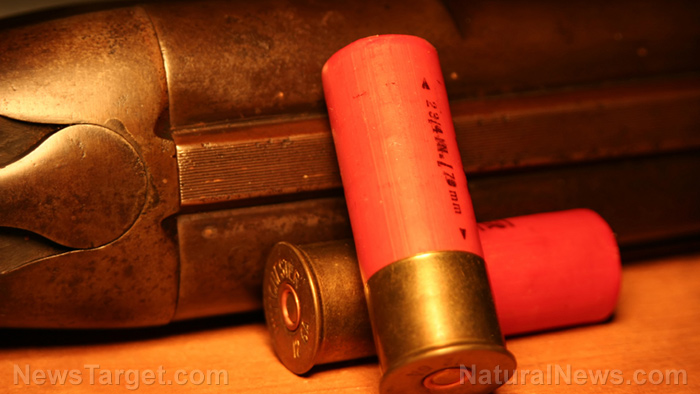A basic guide to making your own shotgun shells
Tuesday, October 02, 2018 by Zoey Sky
http://www.bugout.news/2018-10-02-a-basic-guide-to-making-your-own-shotgun-shells.html

As a gun-owning prepper, one way to save money is to learn how to make your own shotgun shells. (h/t to AskAPrepper.com)
The first firearms adapted for practical use include smoothbore shotguns or scatterguns. These guns, which were designed in the early 17th century, were initially called “fowling pieces.” The shoulder weapons were used to hunt small birds or animals and they fired a lead shot at close range.
The modern shotgun is also a type of smoothbore weapon, but some shotguns are equipped with rifled barrels meant to fire sabot slugs, that, when used with optics, can reach deer out to about 130 yards.
The shotgun is mostly used as a short-range weapon, but with high-tech slug construction and wad systems shotguns can be used for hunting. Gun performance can also be improved if shotguns are mounted with dedicated varmint hunting scopes.
Handloading/home loading is a crucial part of shotgun shooting because this gives you the chance to make high-quality ammo by making the cartridges yourself. Even with the vast array of commercial shotgun ammunition sold in stores, it isn’t easy to purchase factory loads for unusual bore sizes and chamber lengths, like oddball gauges including 2 7/8″, 10, 14, 32’s, and other exotic numbers.
With home loading, you can save some money as you produce your own cartridges. Using the proper techniques and materials, these cartridges may even exceed the quality of factory-produced cartridges. This also ensures that you never run out of ammo even after SHTF. (Related: 5 steps to take to be prepared for anything.)
Shotshell reloading basics and steps
Compared to making small caliber ammo, shotshell reloading is relatively easier. However, before you can start making your own shotgun shells you will need to do some research. You’ll also need simple hand tools such as a de-and re-capper to remove the old primer and insert a new one. Other materials you might need include shotshell powder, a shot measure reloading hand scoop/dipper, and a turnover tool to seal the end of the loaded hull.
Aside from these tools, you can make small batches of shotshells using a reloading press or a progressive machine. The latter can be used to finish reloading steps on several shells simultaneously.
Just like reloading centerfire rifle ammo, shotgun reloading supplies include:
- A hull (the correct term for the plastic part of a shotgun shell)
- The powder
- The primer
- The wad
- The shot
In essence, the whole reloading process can be summarized into seven steps that are applicable to all gauges of different proportions:
- De-prime the empty hull
- Re-prime the cartridge with a new primer
- Drop a powder charge
- Seat a wad
- Drop the shot
- Start the new crimp
- Complete the crimp
Once these seven steps are done, inspect the shell for any defects. In most cases, this signals the end of the process and the fired shotgun shell should be ready to fire.
Tips to streamline the reloading process include using high-quality hulls and the right loader. Don’t rush the process and keep tools and items organized to avoid any accidents.
Aside from food supplies and survival gear, make sure you have enough reloading supplies for ammo so you can use your guns even after SHTF.
Prepping shotgun shells for the long-term
During a long-term SHTF scenario, your ammo may eventually run out. Before you can make your own fully functional shotgun shells from scratch, consider the four main components that you need to produce shotgun ammunition: shells, powder, primers, and shot.
Shells
Modern shotgun shells are made of plastic, but in the past, paper and brass were used. Paper shells were cheaper and easier to produce than the all brass case.
Powder
When handloading shotgun shells, you will need black powder. Gunpowder or black powder is easier to make at home because it contains sulfur, charcoal, and potassium nitrate/saltpeter. A basic recipe for powder will only have two ingredients: 20 percent charcoal and 80 percent potassium nitrate. You can either make this yourself or buy it.
Primer
DIY impact-sensitive primers can be difficult to make and it’s a dangerous part of making your own ammo. This section requires basic ammunition and a knowledge of chemistry. You can make your own primer, but it will require some hard work.
Shot
To cast your own shot pellets, you’ll need a buckshot mold and a sizable supply of lead.
As a prepper, you have the choice of buying your own ammo or making your own shotgun shells. However, the latter, which isn’t always easy, can teach you to be more self-reliant and patient.
Check out other articles with tips on how to make your own ammo and gun safety at Guns.news.
Sources include:
Tagged Under: Tags: ammo, ammunition, firearms, fowling pieces, gun safety, guns, Handloading, home loading, Homestead, homesteading, how-to, off grid, preparedness, prepper, prepping, scatterguns, self sufficiency, self-reliance, shotgun shells, shotguns, SHTF, smoothbore shotguns, supplies, survival, survivalist, tools, weapons

